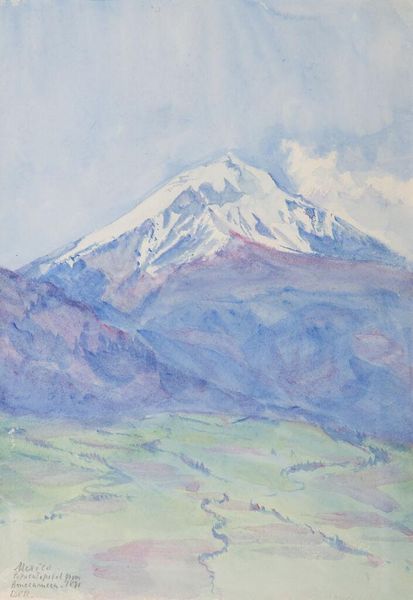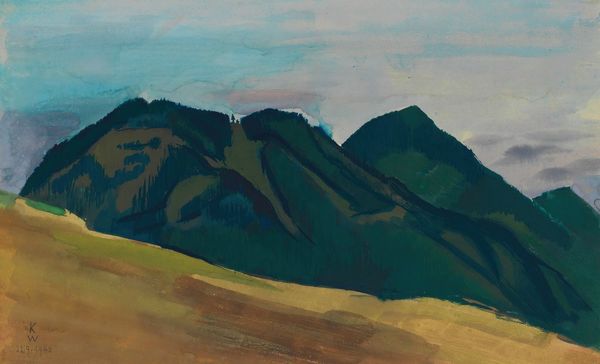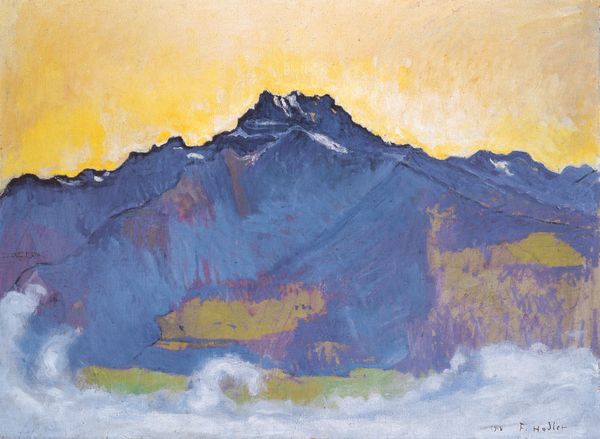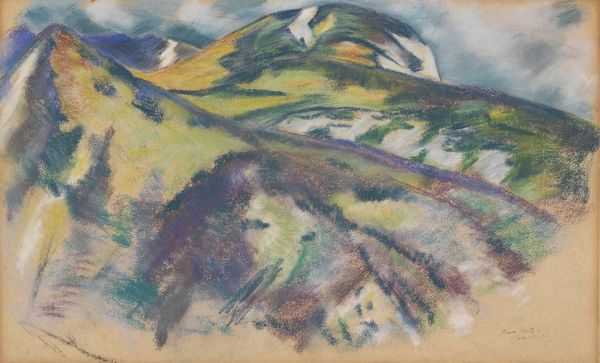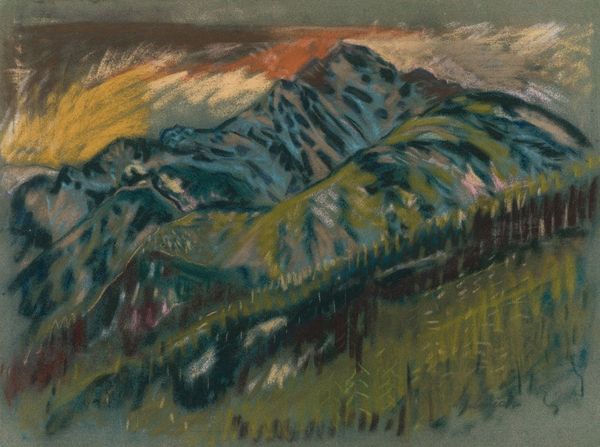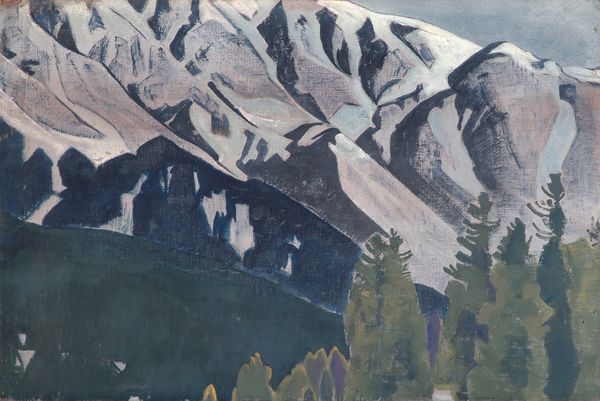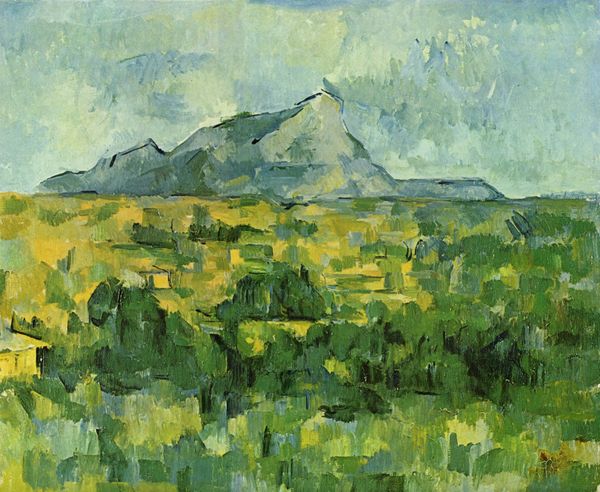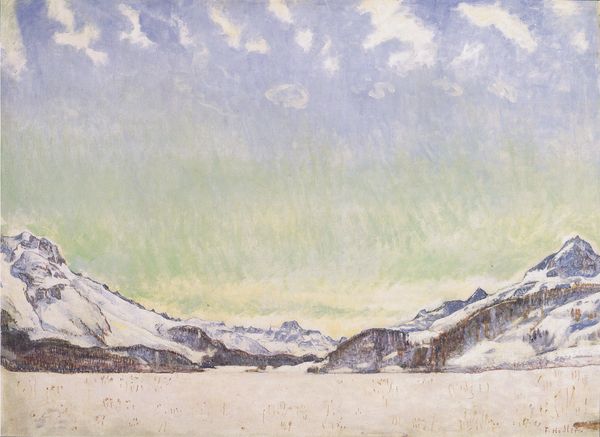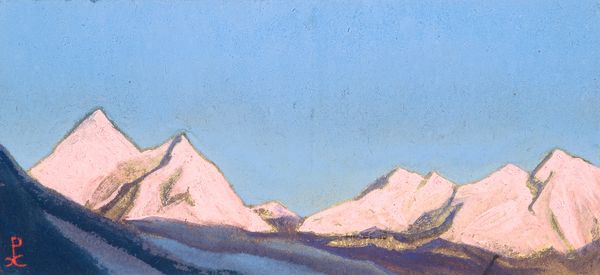
Dimensions: 56 x 76 cm
Copyright: Public domain
Curator: Before us is "Fuji San at winter," an acrylic painting on canvas created in 2000 by Alfred Freddy Krupa. Editor: My initial reaction is a sense of wintry calm, almost melancholic, despite the fairly bold strokes. It evokes the feeling of a stark, quiet landscape under a cool, overcast sky. Curator: It is an interesting work. We can examine the use of colour. The painting relies heavily on a muted palette of blues, whites, and earthy tones. Observe how Krupa employs varying brushstrokes to create depth and texture. The peak of Fuji is suggested, but rendered with dynamic gestural strokes that break it down in expressionistic fashion. Editor: Exactly, that's where my activist lens kicks in. I immediately consider how landscape art historically excludes those without access to land, reflecting entrenched social and economic inequalities. Krupa is painting at the beginning of the 21st century; his expressionist style nods to the tumultuous social changes of the 20th, with the looming, snow-covered mountain, to me, speaking to our present climate anxiety and its disproportional effect on disenfranchised people and their landscapes. Curator: Your interpretation is convincing, yet consider the formal aspects as bearing cultural weight as well: Krupa's engagement with Expressionism, while seemingly Western in origin, represents a deliberate break from more rigid artistic traditions. One sees semiotic undertones within this. How might such an abstraction challenge established views within Japanese landscape aesthetics of the late twentieth century? Editor: Absolutely. Art is rarely created in a vacuum, is it? The post-war cultural exchanges shaped artistic practices worldwide. Krupa, working at the turn of the millennium, is perhaps navigating his own cultural identity through this landscape—a comment on tradition, globalisation, and artistic freedom. I keep thinking, too, about the cultural importance that depictions of the landscape have for marginalized communities across the globe and whether those resonances can be seen here. Curator: Perhaps the tension between representation and abstraction serves to universalise, not particularise, the mountain; thereby removing specificity. Editor: Possibly so. It's this tension that really stays with me: it is an engagement of history but with modern experience. It invites many readings that way. Curator: Yes, a painting is more than the sum of its brushstrokes. It offers endless dialogue.
Comments
No comments
Be the first to comment and join the conversation on the ultimate creative platform.
